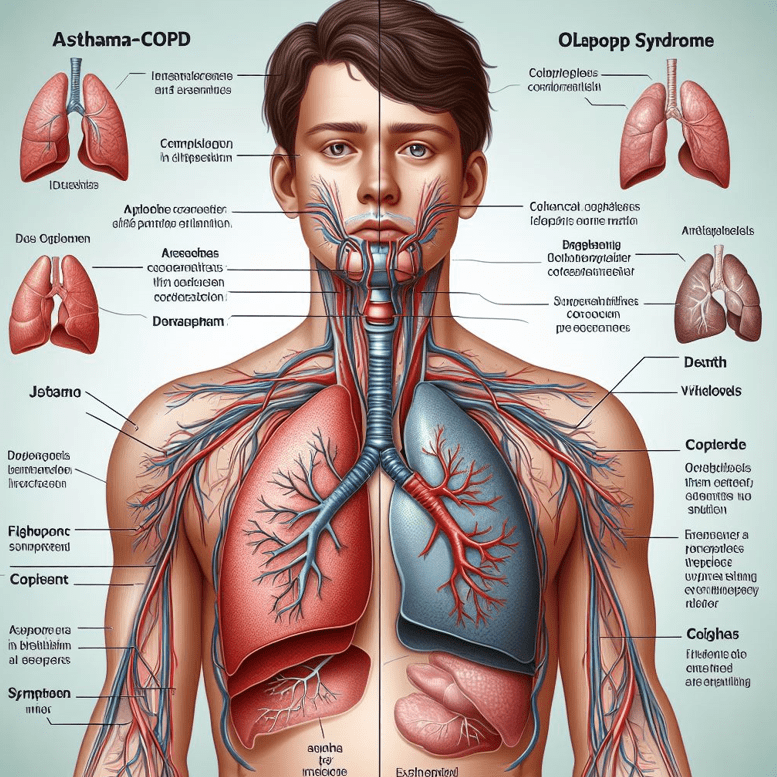
Asthma-COPD Overlap Syndrome (ACOS) is a medical condition that combines symptoms of both Asthma and Chronic Obstructive Pulmonary Disease (COPD). This complex respiratory disorder poses unique challenges for diagnosis and treatment. Understanding ACOS is crucial for healthcare professionals and patients alike, as it requires a tailored approach distinct from managing asthma or COPD alone.
Definition and Characteristics
ACOS is characterized by persistent airflow limitation with features of both asthma and COPD. This condition is typically seen in older adults who have a history of smoking and a history of asthma from a younger age. The clinical manifestations include:
- Wheezing and shortness of breath.
- Chronic cough and sputum production.
- Variable airflow obstruction.
Epidemiology
The prevalence of ACOS varies, but it’s estimated that about 15-25% of patients with chronic obstructive airway diseases have features of ACOS. It is more common in smokers and former smokers, and in those with a history of asthma.
Pathophysiology
The pathophysiological mechanisms underlying ACOS involve aspects of both asthma and COPD. In asthma, inflammation leads to reversible airflow obstruction, while in COPD, exposure to noxious particles (like cigarette smoke) causes irreversible damage. In ACOS, patients experience both reversible and irreversible airflow limitations, along with a mixed inflammatory response.
Diagnosis
Diagnosing ACOS can be challenging as it shares features of both asthma and COPD. Key diagnostic tools include:
- Patient history, focusing on symptoms and smoking history.
- Spirometry to assess lung function and airflow obstruction.
- Imaging, such as chest X-rays or CT scans, to rule out other conditions.
- Allergy testing and assessment of eosinophilic inflammation.
Treatment
Treatment for ACOS generally includes a combination of therapies used for asthma and COPD:
- Bronchodilators: Both short-acting and long-acting bronchodilators are used to relieve symptoms.
- Inhaled corticosteroids: To reduce inflammation.
- Smoking cessation: Crucial for slowing disease progression.
- Pulmonary rehabilitation: Exercises and education to improve lung function and quality of life.
- Vaccinations: To prevent respiratory infections.
Challenges and Considerations
ACOS poses several challenges:
- Overlapping Symptoms: Differentiating between asthma, COPD, and ACOS based on symptoms alone is difficult.
- Treatment Complexity: Patients may require a combination of treatments, and their response to therapy can vary.
- Disease Management: Managing comorbidities and ensuring patient adherence to a complex treatment regimen.
Conclusion
Asthma-COPD Overlap Syndrome represents a significant clinical challenge due to its overlapping features and complex management needs. A comprehensive approach involving accurate diagnosis, tailored treatment plans, and ongoing patient education is essential for managing ACOS effectively. Further research is needed to understand this condition better and develop more targeted therapies.